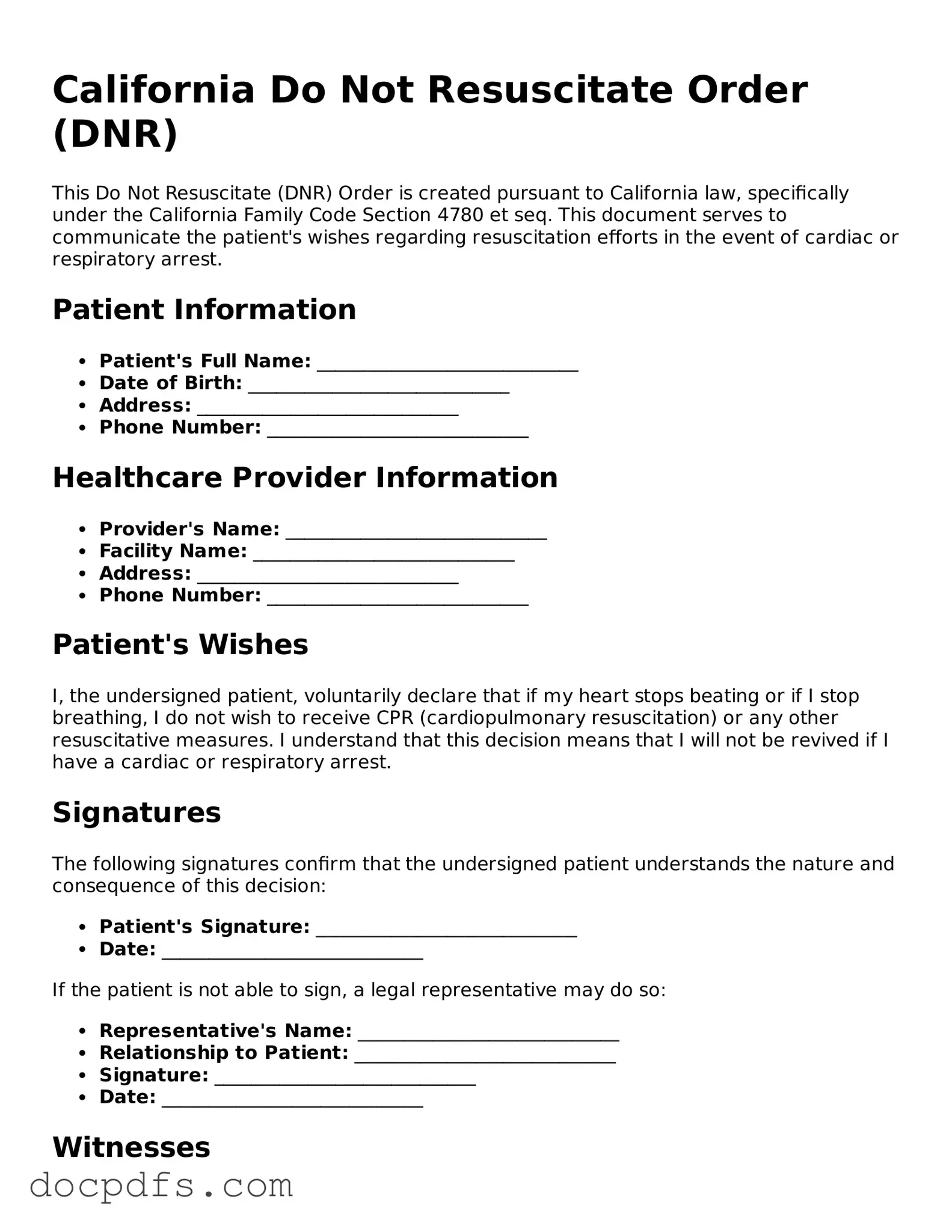What is a Do Not Resuscitate (DNR) Order in California?
A Do Not Resuscitate Order is a legal document that allows individuals to refuse specific life-saving medical interventions, particularly cardiopulmonary resuscitation (CPR), in the event of a medical emergency. In California, this order is recognized by healthcare providers, ensuring that a patient's wishes are honored when they are unable to communicate them.
Who can request a DNR Order?
Typically, a DNR Order can be requested by any adult who is capable of making their own medical decisions. This includes:
-
Patients who are facing a terminal illness or a serious medical condition.
-
Individuals who have a clear understanding of their health situation and the implications of a DNR Order.
In some cases, a legal guardian or an authorized healthcare proxy may also request a DNR Order on behalf of an incapacitated individual.
How do I obtain a DNR Order in California?
To obtain a DNR Order, follow these steps:
-
Consult with your healthcare provider to discuss your medical condition and the implications of a DNR Order.
-
Complete the California DNR form, which can be obtained from your doctor, hospital, or online through state health department resources.
-
Sign the form in the presence of a witness or a notary public, as required.
-
Provide copies of the signed DNR Order to your healthcare providers and keep a copy for your records.
Will a DNR Order affect my overall medical care?
No, having a DNR Order does not mean that you will receive less medical care. It specifically addresses resuscitation efforts in the event of cardiac or respiratory arrest. You will continue to receive all other necessary medical treatments and interventions as directed by your healthcare team.
Can I change or revoke my DNR Order?
Yes, you can change or revoke your DNR Order at any time. To do so, you simply need to complete a new DNR form indicating your updated wishes and notify your healthcare providers. It's essential to ensure that your most current wishes are clearly communicated and documented.
What should I do if I change my mind about my DNR Order?
If you change your mind about your DNR Order, you can revoke it by informing your healthcare provider and completing a new form that reflects your current wishes. It's important to communicate any changes to your family members and caregivers to ensure everyone is aware of your decision.
